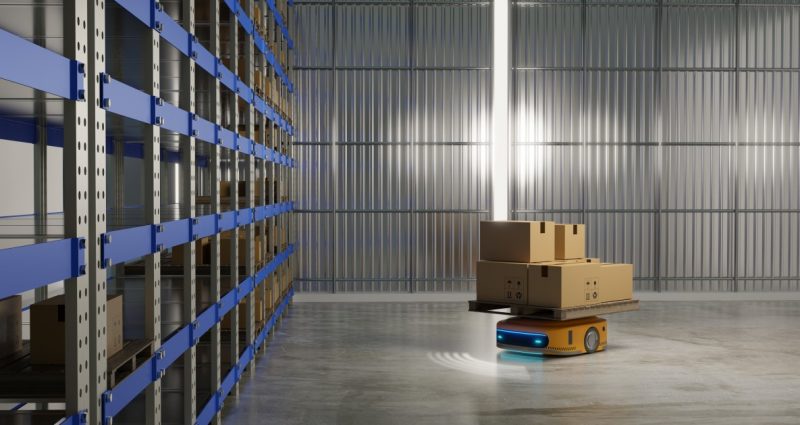Estimated reading time: 5 minutes
The U.S. Bureau of Labor Statistics reports that as of December 2021, 10.9 million jobs remained unfilled in the U.S., with 1.868 million of those positions in trade, transportation and utilities, 1.014 million in retail, and 1.533 million in accommodation and food services.
U.S. Bureau of Labor Statistics
A priority for technology solutions providers (TSPs) has always been designing solutions to meet their market’s specific needs, but achieving that objective has become more of a challenge in the 2020s. The pandemic drove widespread changes in how consumers shop, how businesses need to meet those demands—and the technology necessary to support new processes. But right on the heels of changes to accommodate new omni-channel consumers is a new challenge: Operating short-staffed. It’s safe to say that regardless of the markets for which your software is designed, you have the opportunity to help your clients automate and streamline their processes so they can overcome labor shortage challenges.
In-Demand Labor Shortage Solutions
Innovative TSPs are discovering that they can use existing solutions in new ways or adapt them to meet business needs when they’re a few people short. Labor shortage solutions you may be able to provide include:
E-commerce management and fulfillment
- Maybe the most dramatic shift during the pandemic was the rise in e-commerce. eMarketer reports that online sales in the U.S. rose 32.4 percent in 2020, and analysts expect e-commerce to continue, accounting for one-quarter of all retail sales by 2025
- TSPs need to remember that e-commerce solutions are more than platforms that showcase products and accept payments online. It also requires inventory management and order fulfillment, which your software may help your clients streamline or automate.
Digital signage and shelf labels
- Merchants invest time in promoting sales, advertising pricing, displaying menus of foods or services, and, when necessary, communicating health and safety information. Digital signage management systems and electronic shelf labels allow a manager to change messaging or prices across all signs throughout the store – or an entire chain – with a few clicks. It ensures all stores display consistent messaging and the same pricing simultaneously, such as when a sale begins. Furthermore, when a store is short-staffed, it also eliminates the need for employees to update signage so they can focus on sales, customer service, and other high-value tasks.
Self-checkout and self-service
- A growing trend during the labor shortage is deploying self-checkout or self-service kiosks. Self-checkout reduces the number of employees necessary to manage lanes – one employee, for example, could monitor and assist customers in four or more lanes. Self-service kiosks can also enable restaurant customers to place their orders, decreasing the number of employees needed at the counter or servers on the floor. Self-service kiosks can also help fill gaps in theater box offices or transportation ticketing when employees need to be assigned elsewhere.
- In addition to enabling a business to schedule fewer employees per shift, self-service or self-checkout solutions also deliver experiences that consumers want. Research from self-service solution provider Cantaloupe revealed that 90 percent of consumers choose self-service options to check out more quickly and avoid long lines.
Order and pay at the table
Mobile solutions that enable servers to take orders and payments at the table save time and allow faster table turns. Restaurant solution provider Tabit found that mobile POS can decrease the time it takes to turn tables during peak time by 12 to 15 minutes, even with 20 percent fewer servers per shift.
- When restaurants don’t have enough servers, customer service can suffer, particularly if they need to take extra steps with each order to enter it at a point of sale (POS) terminal. And, when customers are ready to settle the check, to walk back and forth to run the credit card.
Warehouse and field service IoT solutions

- Although field service and warehouse operations have increased efficiency with mobile solutions over the past decade, those solutions still require labor to use them. Now, these businesses are exploring Internet of Things (IoT) solutions to automate data collection and, in some cases, work with robots or embedded computers to carry out tasks.
- Additionally, IoT devices and sensors can track inventory that moves in and out of a warehouse or instantly locate assets or technicians and adapt schedules if circumstances change. In each case, automating processes with IoT solutions enables fewer employees to manage operations efficiently and productively.
Healthcare asset management
- Managing machinery, equipment, and hospital assets is essential to healthcare organizations, but it can also be labor-intensive. A hospital, surgical center, or urgent care facility can use IoT or RFID to track asset use and equipment condition and immediately locate the equipment or assets they need.
Machine condition monitoring
- It’s essential for manufacturers and enterprises that use heavy equipment to ensure machines are in peak condition to avoid downtime and possible damage to those investments. However, inspecting machines typically requires taking them offline to determine if they need maintenance.
Machine condition monitoring solutions eliminate the need for those inspections – and employees to perform checks – by continuously monitoring equipment.
eCitation for law enforcement
- Local government operations typically have room for improvement, and solutions that minimize paper-based processes and eliminate rekeying information can reduce the number of employees needed on the schedule.
For instance, eCitation solutions enable law enforcement officers to use mobile devices to collect information and print tickets, saving time per traffic stop. Additionally, the system integrates with the department’s or court’s system, so employees who entered information from paper citations can focus on other aspects of their jobs.

Faster, Efficient, Automated Labor Shortage Solutions
You’ve built a successful business by making your clients’ processes easier, quicker and more efficient – but before the 2020s, the assumption was that labor would always be available to use the solutions you provide. Now, your clients may be searching for ways to operate with fewer people on the schedule long term.
Consider how your solutions can help businesses overcome current challenges or how you may be able to adapt products specifically as labor shortage solutions. As long as millions of jobs remain unfilled, you’ll find prospects eager to hear how you can help.
DevPro Journal

